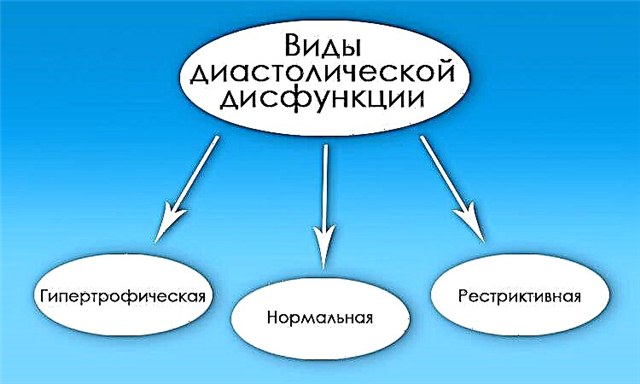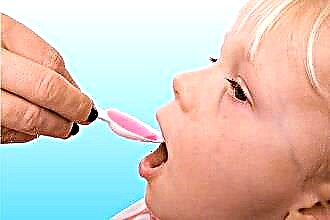The question of whether it is possible to do inhalation for angina, if the patient is being treated not in an inpatient department, but at home, has long been discussed in online articles. In order to clarify the solution to this problem, it is necessary to look at it exclusively from the point of view of evidence-based medicine. Let's try to understand all the conditions and features of this procedure and the possibility of its use in such a pathology as tonsillitis. Let's highlight the main arguments of the supporters and opponents of inhalation for angina and talk about each of them.
Local heating
 This fact, perhaps, is the rationale for the prohibition of inhalations, which is most common. And at first glance, it sounds quite reasonable: inflammation of the tonsils in the overwhelming majority of cases is infectious. And pathogenic microorganisms for their vital activity need a temperature of 37-38 C. In such conditions, bacteria and viruses multiply intensively and, accordingly, further spread of the infection occurs. Opponents of inhalation argue that this procedure raises the local temperature precisely in the area of the body where the infectious lesion occurred.
This fact, perhaps, is the rationale for the prohibition of inhalations, which is most common. And at first glance, it sounds quite reasonable: inflammation of the tonsils in the overwhelming majority of cases is infectious. And pathogenic microorganisms for their vital activity need a temperature of 37-38 C. In such conditions, bacteria and viruses multiply intensively and, accordingly, further spread of the infection occurs. Opponents of inhalation argue that this procedure raises the local temperature precisely in the area of the body where the infectious lesion occurred.
Therefore, with a sore throat with a purulent component (that is, with an open and actively proceeding infection), inhalation cannot be done - they will only contribute to the development of bacteria.
From the point of view of medicine, here it is necessary in advance and without fail to indicate in what way it is planned to produce inhalation with angina. There are three methods for performing this procedure:
- Steam inhalation
- Using the kettle
- Nebulizer nebulizers
Steam inhalation
In this case, the drug in liquid form is poured into a saucepan or other container with a wide top. A large amount of water heated to 80-85 C is also added there, which ensures the evaporation of the solution. The patient leans over the container, and a towel is thrown over his head so that its edges touch the surface on which the pan stands. This retains the vapor, preventing it from quickly dissipating into the air. The patient inhales vapors through the mouth, holds his breath, allowing the drug to settle on the mucous membranes, and then exhales through his nose.
 Indeed, in the course of such treatment of angina, inhalation of hot vapors of medicinal compounds increases the local temperature in the throat. But this effect is very short-lived: the duration of the procedure for adults is 10 minutes, and for children - 5 minutes. During this time, no infection will have time to sharply intensify its vital activity.
Indeed, in the course of such treatment of angina, inhalation of hot vapors of medicinal compounds increases the local temperature in the throat. But this effect is very short-lived: the duration of the procedure for adults is 10 minutes, and for children - 5 minutes. During this time, no infection will have time to sharply intensify its vital activity.
After the end of inhalation, the internal homeostasis systems of the body will bring the local temperature in the throat to normal values literally within 2-3 minutes.
But the medicinal substances that have fallen on the inflamed mucous membrane of the tonsils will remain there, starting their therapeutic effect.
There is only one limitation in the conduct of steam inhalations associated with temperature effects: the acute stage of follicular sore throat, in which an increased temperature increases the risk of rupture of purulent follicles.
At home, it will not be possible to properly disinfect the wound surfaces and completely remove the pus. This will lead to long-term healing, complications and the appearance of rough scars and scars on the tonsils.
Steam inhalation over a saucepan with a solution can be carried out for all forms of angina, except for the most pronounced cases with abundant formation of purulent follicles.
Inhalation through the kettle
In this case, the medicinal substance mixed with hot water is poured into the kettle so that the liquid level does not reach the inner opening of the spout. Thus, the evaporating solution of the pharmacological preparation will accumulate in a closed container and will receive only one way to exit - through the spout of the kettle.
Inhalation for angina at home using this technique suggests that a paper cone is inserted into the narrow opening of the spout located at its far end. This cone is made of thick paper. The density is quite important here, since water vapor will pass through this cone, gradually softening the paper, and it must withstand the entire inhalation procedure. Sometimes, to provide additional density, they take several sheets of plain paper, lay them on top of each other and only then fold them into a kind of funnel.
The essence of the procedure is that a paper cone inserted into the spout of the teapot acts as an inhalation mask. The wide part of the cone should be of sufficient diameter to cover the patient's nasolabial triangle. The vaporized drug, when inhaled, passes along the spout, enters the paper funnel, and from there directly into the patient's throat.
The advantage of this method is that the longer the cone, the lower the temperature of the steam reaching the mucous membranes. Accordingly, if you want to exclude local heating of the throat, make a funnel 12-15 cm long, and when inhaled, the drug will acquire the temperature of the human body.
Inhalation with angina using a paper cone inserted into the spout of a teapot with a hot solution will not lead to a local increase in temperature in the throat with a sufficient funnel length.
Nebulizer inhalation
This procedure is carried out using a special device that converts a pharmacological drug from a liquid state into the form of an aerosol air suspension. Medical science offers three options for such devices, which differ in the principle of operation:
- Compressor nebulizers. The aerosol is formed here using an air jet. Air under high pressure is pumped by the compressor into the chamber of the device, which contains the drug, mixes with it and forms a volatile suspension.
- Ultrasonic nebulizers. In such models, a liquid preparation is converted into an aerosol form under the influence of ultrasonic waves. They kind of "whip up" the solution, giving it the properties of a fog.
- Membrane nebulizers. These devices are also called mesh nebulizers and their principle of operation is based on the inclusion of a vibrating membrane in the design. This membrane separates the chamber with the liquid preparation from the cavity where the aerosol is formed. Such a partition has a large number of microscopic holes. High-frequency vibration causes the solution to seep through these holes and form a fine air suspension.
As it is easy to see from the description of the principle of operation of all three types of nebulizers, none of them is based on the evaporation of a medicinal substance under the influence of high temperature.
 It should be noted that ultrasonic nebulizers have a feature associated with heating the drug during its spraying with sound waves. This places restrictions on the use in these models of certain drugs (for example, antibiotics or glucocorticosteroids), which are destroyed by heat. But this heating is very short-lived and already in the process of inhalation, the suspension of the medicinal substance acquires a normal temperature. Inhalation with angina using nebulizers does not have any restrictions in terms of local warming of the throat.
It should be noted that ultrasonic nebulizers have a feature associated with heating the drug during its spraying with sound waves. This places restrictions on the use in these models of certain drugs (for example, antibiotics or glucocorticosteroids), which are destroyed by heat. But this heating is very short-lived and already in the process of inhalation, the suspension of the medicinal substance acquires a normal temperature. Inhalation with angina using nebulizers does not have any restrictions in terms of local warming of the throat.
Patient age
The inhalation method of administration of drugs implies the active participation of the patient himself.If a nurse can administer an intramuscular injection to a patient of any age and regardless of his condition, then for inhalation it is necessary that the patient independently perform respiratory movements coordinated with the supply of the drug.
In the case of sore throat treatment, this means that inhalations are quite difficult to carry out in young children.
Usually, in the first year of life, such procedures are not applied at all. It is not difficult to choose the right drug, correctly calculate its dosage and maintain safety, but it is impossible to explain the inhalation technique to a child under 1 year old. And inhalation administration of drugs without the active participation of the patient, although theoretically possible, is ineffective.
Direct contraindications
Discussing whether it is possible to do inhalations with angina, it is necessary to dwell separately on those limitations that are really inherent in this procedure. In the overwhelming majority, these restrictions apply to inhalation associated with exposure to high-temperature vapors.
Heat
 Angina is an infectious disease in which, in the acute period, the body temperature begins to rise.
Angina is an infectious disease in which, in the acute period, the body temperature begins to rise.
In fact, such a reaction is an indicator of the body's active resistance to infectious agents.
An increase in temperature over 38 C already poses a threat to the normal functioning of cells and the biochemical reactions taking place in them.
Therefore, when this threshold is exceeded, it is recommended to bring down the temperature with pharmacological means. In addition, steam inhalations with hot drug solutions cannot be carried out - even a short-term reflex temperature effect on the patient's head increases the risk of syncope and vascular catastrophes.
Heart pathology
Severe diseases of the cardiovascular system in the form of arterial hypertension, arrhythmic disorders, heart failure, etc. are contraindications to steam inhalation. High temperature has a risk of provoking an exacerbation of such pathologies.
Respiratory system diseases
Inhalation of any type should not be performed when the patient has impaired respiratory function or impaired airway patency. In addition, if angina is combined with exacerbation of bronchial asthma, broncho- and laryngospasm, then its inhalation treatment cannot be carried out - first, an acute disruption of the respiratory system must be removed.
Nosebleeds
If the patient has a tendency to bleeding from the nasal capillaries, steam inhalation is contraindicated for him. A local increase in temperature in the nasopharynx leads to vasodilation, and this, in turn, increases the risk of rupture and bleeding.
Individual drug intolerance
Finally, we must not forget that before carrying out inhalations, like other therapeutic measures for angina, you should make sure that the patient is not allergic to those medicinal compounds that are planned to be used during the procedure.



